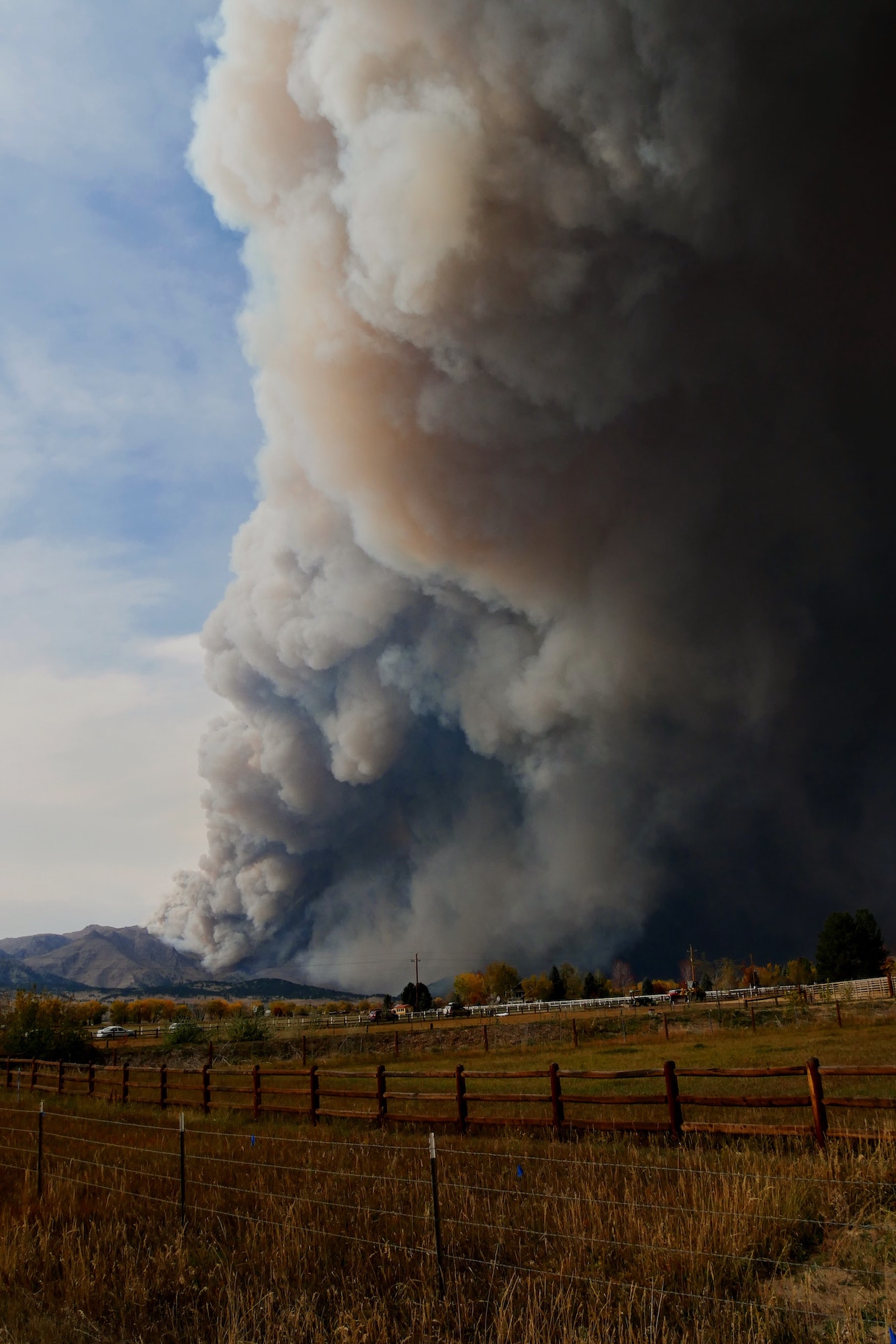Mission
Stop human-caused fires by adapting technology to communicate preventative measures during conditions favoring rapid fire growth (low humidity, high wind speeds, drought, and little precipitation). When fires start, better prepare residents for evacuation.
The Problem
Weather Watches and Warnings
Weather apps on smartphones send alerts during extreme weather conditions.
When pre-tornado conditions occur for a particular region, the National Weather Service (NWS) issues a tornado watch. A tornado watch prepares residents for the possibility of tornado formation.
When a tornado forms, the NWS sends a tornado warning. The tornado warning strongly advises residents in the region to seek shelter.
Hurricanes, flooding, winter weather, and other natural disasters use the watch/warning system.
Red Flag Warnings
Rather, the NWS broadcasts a red flag warning, which describes the conditions that could lead to rapidly growing fires. The only conditions considered are low humidity and strong winds.
Red Flag Warnings Aren’t Useful
1.The name “red flag” does not accurately describe the danger of a possible fire.
2. Unfamiliar terms like “fire weather zones” may be unclear to the general public.
3. The red flag warning does not issue instructions.
4. The warning includes unnecessary statistics.


The Solution
1
Adopt a fire watch/warning system.
<< UPDATE: While I was publishing this website, the NWS adopted a fire watch system, which is part of my overall plan to reduce fires. However I still believe an updated fire warning is necessary.>>
2
Use vocabulary the general public can understand, and make the message uncomplicated. Use region names (such as counties, cities, neighborhoods) that residents recognize. Use bold and all capitals only for important information.
3
Include a picture of the map with the region highlighted.
4
A fire watch would be announced due to fire conditions:
– High winds
– Low humidity
– Ongoing drought conditions
In order to define fire weather, past fire conditions should be researched.
5
The fire watch should include preventative measures; specifically, what not to do.
6
NWS would declare a fire warning when there is an active fire that could endanger residents in the region. It would prepare residents for the possibility of an evacuation. Local jurisdictions would continue to order evacuations, not the weather app.
Fire Watch

The National Weather Service has issued a FIRE WATCH in effect until 8pm MDT for the following counties, GRAND, LARIMER, BOULDER, GILPIN, JEFFERSON, and DENVER.
The following activities are PROHIBITED: barbeque, fireworks, tossing cigarette butts, campfires, and burning trash.
Conditions favor DEVELOPMENT AND RAPID SPREAD OF WILDFIRES due to low humidity, high wind speeds, ongoing drought, and lack of recent precipitation.
Fire Warning

Emergency alert
Confirmed FIRE SIGHTING 20 miles east of Breckenridge the following regions are under a FIRE WARNING: SOUTHEAST SUMMIT COUNTY, NORTHWEST, NORTHWEST PARK COUNTY, SOUTHWEST CLEAR CREEK COUNTY.
Residents should PREPARE FOR POSSIBLE EVACUATION. Check local media.
Risks
Due to increasing long drought conditions, the watches could be announced more frequently. This could lead people to ignore the messages because they occur too often. This can be prevented by sending the watches only when true fire conditions exist. The data can be refined by collecting statistics for previous mega fires.
People may ignore the watches. As fires become increasingly more expensive and destructive, fining people for violations during fire watches would show the importance of obeying the warnings.
Next Steps
- Get community feedback – please fill out my survey
- Incorporate feedback
- Contact fire scientists
- Submit idea to weather apps
The Most Destructive Fires in Colorado History (by acreage + Marshall fire)

Feedback

Background
History
Small fires are key to a healthy ecosystem; they control natural fire fuel ( grass, shrubs, fallen tree branches, dead trees, pine needles, anything that is from nature and flammable) from overgrowing. Fallen tree trunks and tall grasses are now ladders for fires to reach the crown layer of forests to create what is known as megafires.
The US Department of Interior states “Periodic low-intensity fires speed up the process of forest decomposition, create open patches for new plants to grow, improve habitat and food for animals and deliver nutrients to the plants that survive.” (“Fuels Management”)
For centuries wildfires burned through Colorado forests. If a small spark created a little bush fire, it would never create a mega fire endangering thousands of acres of land. When did the invasion of fires begin? The start of megafires and mass fire destruction dates back to the 1800’s.
In 1848, settlers immigrated across America into the west in hopes of finding gold. According to ColoradoEncyclopedia more than 100,000 people settled across Colorado to mine for gold. To meet the needs of the growing population, cities began to grow through the mountains. The same essential fire could no longer burn because we needed to protect the new settlement.
Wildfire patterns are essential for a healthy ecosystem. We have continued an unhealthy relationship with nature and now have to protect civilizations in fire zones. Small steps to reduce human caused wildfires could protect our forest from catastrophic fire disasters.
More about statewide fire prevention steps here.
About Me
I have been an International Baccalaureate student for nine years. Completing a community service project summarizes the end of the IB middle school program.
In my seventh grade science class, my peers and I collaborated on possible measures Colorado residents could take to prevent fire destruction. I became really interested in fire’s role in our ecosystem.
I love playing basketball, cooking, snowboarding, gardening, and everything science related.
